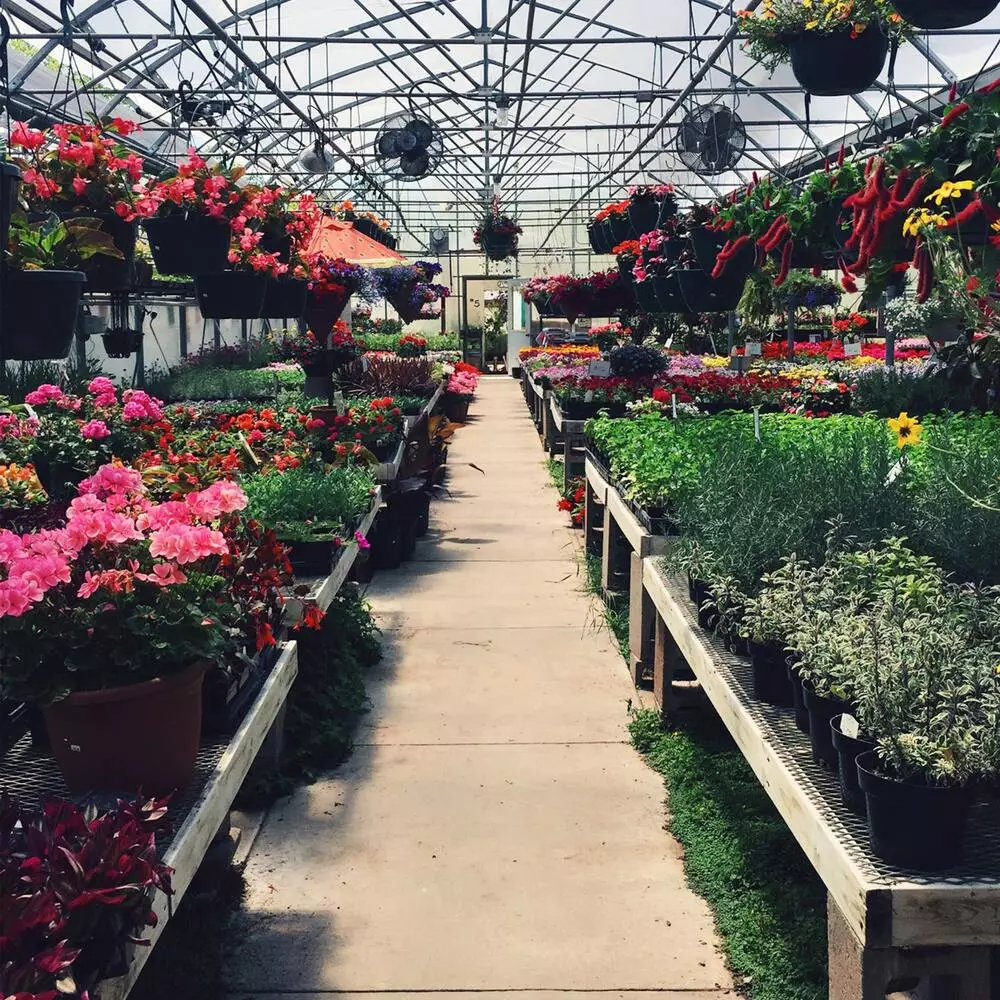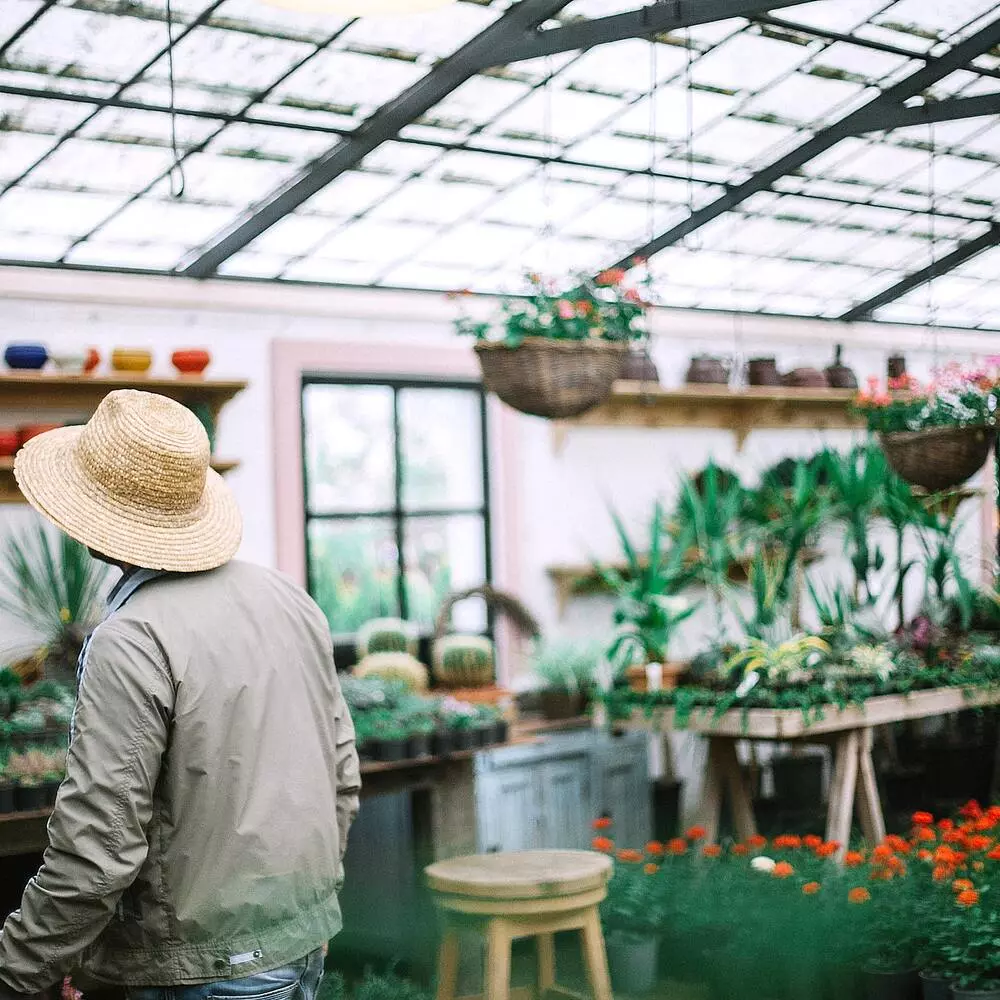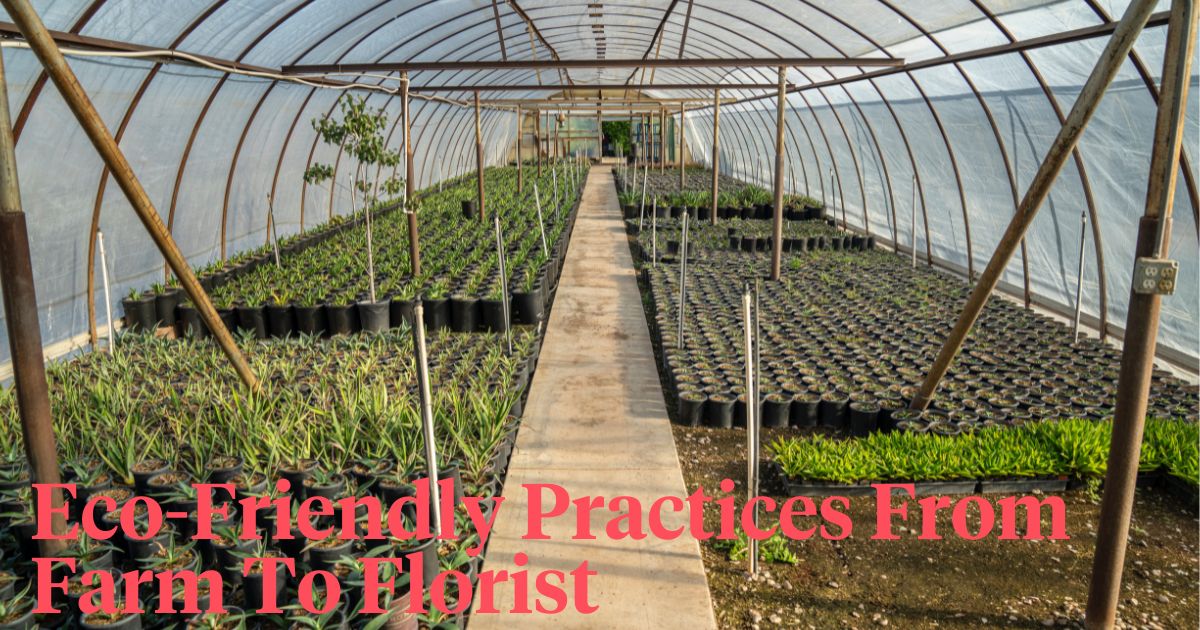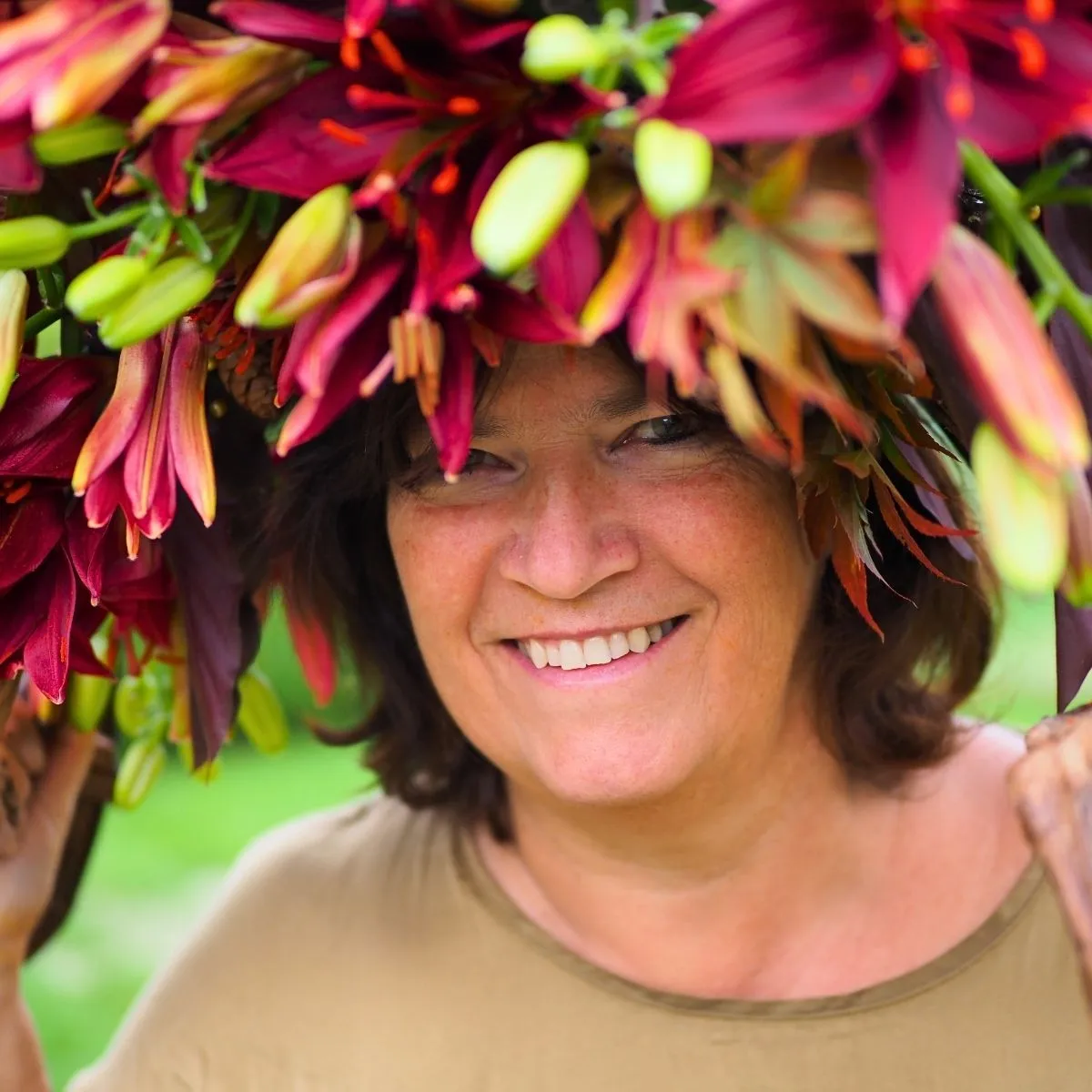Flowers fill our lives with joy and beauty, letting us connect with nature right in the heart of the concrete jungle. On the flip side, it’s not all roses for Mother Nature as the global floricultural industry comes with a significant environmental footprint. Flower cultivation and transportation release planet-warming greenhouse gases, divert water from food crops and involve rampant pesticide use, not to mention low pay and dangerous conditions for workers in developing countries. There’s a growing need to put the flower business on a strong sustainability footing to minimize the detrimental impact and build a more resilient floral sector.

Uncovering the scale of the flower industry
To many, Climate Smart Agriculture (CSA) concept looks like a viable solution, offering a promising eco-friendly future to the now-thriving floral industry. The recent pandemic took a toll on the entire flower supply chain, affecting growers, suppliers, and retailers alike. On the bright side, lockdowns and closed shops created a window of opportunities for e-commerce growth, causing online flower sales to boom. And today, the global flower industry is up and about with an annual estimated value of $104.8 billion. This flourishing sector encompasses the cultivation, trading, and retailing of a wide array of flower products as well as related services, from shipping cut flowers to selling seeds and bulbs to creating floral decors for special events.
The stark reality behind this business is that global production is split between a small number of countries and the bulk of blooms is shuttled between continents all year round. The travel from garden to end customer is often a multi-day intercontinental journey, which leaves a massive carbon footprint and involves heavy use of chemicals by farmers who need to make sure blooms will endure the trip. While the Netherlands is still the largest producing country, flowers are increasingly grown in the Global South since farming in energy- and water-hungry greenhouses in the North got expensive. Cheaper labor costs and optimal year-round climate giving robust blooms turned Colombia, Ecuador, Kenya, and Ethiopia into major growing areas, supplying flowers to the U.S. and European countries.
What’s behind the trending concept of climate smart agriculture?
Proper growing conditions often mean the right amount of sunlight, water, and nutrients at the right time, be they food crops or flowering plants. Now that climate change is in place with frequent and severe weather calamities, keeping this balance seems challenging like never before. Going back to the basics and cultivating plants in harmony with nature – known as climate-smart farming or agriculture – is not merely a beautiful concept but a strategy proven in the field.
Growing in a climate-smart way means adopting a set of farming practices aimed at increasing the productivity of cultivated lands, ensuring better resilience to climate shocks, and climate change mitigation. These are the main objectives of climate-smart agriculture. Though originally designed for crop and livestock producers, this approach can be successfully expanded into the floricultural landscape. While CSA is not a magic pill for the climate crisis, it does provide a cure for many related ills that flower farmers have to deal with.
Not-so-rosy carbon emissions
Refrigeration and long-haul transportation of flowers between countries generate serious carbon emissions yet international shipping isn’t the only culprit. Believe it or not, the carbon footprint of roses grown in sunny Kenya and air-shipped to Europe is 5.5 times less compared to Dutch flowers farmed in energy-intensive greenhouses with lots of chemicals. Climate-smart agriculture practices represent an effective mitigation strategy for floriculturists. Cutting down on pesticides and switching to renewable energy sources from wind, solar, and biofuels can significantly reduce greenhouse gas emissions from the floral supply chain.
The environmental toll of too many pesticides
Unlike with edible crops, the use of pesticides with flowers is subject to more relaxed regulations, which creates room for the application of highly toxic chemicals. In pursuit of year-round profits, growers go overboard with pesticides to sustain growth. Their excessive use leads to groundwater pollution and eutrophication, causes a decline in pollinators, and biodiversity loss. Minimizing insecticide use or avoiding it at all costs is a climate-smart alternative to traditional spraying: floriculturists can encourage natural predators, place insect traps, regularly weed and remove debris, and, what matters the most, keep their plants healthy and immune to pests.
High water consumption
Flowering plants are thirsty for water: it’s estimated that a single rose stem may consume 7 to 13 liters during production. This has a detrimental effect on local water sources overexploited by nearby flower farms and polluted with pesticides, especially in sub-Saharan water-scarce countries like Kenya and Ethiopia. Additionally, commercial floriculture endangers ecosystems and food production, diverting precious natural resources from crops and aquatic biodiversity. By utilizing climate smart agriculture technologies, flower farmers can irrigate their plants in more sustainable ways, such as drip irrigation, rainwater harvesting, etc, based on specific local conditions. Moreover, with due soil management practices and renewable energy sources in place, irrigation can become even more resource-friendly.

Sustainable flower farming: nipping the harmful industry impact in the bud
Now that we looked at the dark side of the flower industry, let’s explore more promising solutions that can help minimize the harm done. Preindustrial farming methods are gaining momentum among flower growers who put sustainability first, moving away from established practices that cause soil erosion, air and water pollution, or otherwise affect the natural resources we rely on. These include:
- Planting cover crops and catch crops
Just like crop growers, floriculturists turn to a diverse array of annual and perennial cover crops – not for the harvesting purpose but in order to build soil health, drive off weeds, attract pollinators, and create green manure once they are terminated. Catch crops also serve as traps for excessive nutrients, preventing their leaching to groundwater.
- ‘Beeing’ a friend to bugs and pollinators
Why turn to pesticides, when there are natural ways to control pests? Planting hedgerows and shelter belts – habitats for birds, reptiles, pollinators, and beneficial insects that feed on harmful bugs – is a proven biological means of pest control. It is a more efficient, eco-friendly alternative to insecticides, which can knock back beneficial species worse than destructive ones and make blooms easy prey for pesky bugs.
- Limited tilling and no-tilling
The best till is a no-till since every soil disturbance comes at a cost. Leaving soil intact and covered with crop residue helps preserve its structure, promotes biological activity and stronger soil health, prevents erosion, enhances water-holding capacity, and minimizes runoffs, to name a few. No-tilled soil is a win-win for farmers and the planet: it produces robust and abundant plants and locks away carbon dioxide, helping achieve the core objectives of climate-smart agriculture.
The path to water- and energy-saving flower cultivation
As already mentioned, traditional floricultural methods are water-intensive: for instance, Ethiopia is estimated to spend a whopping 60,000 liters of water daily on flower production. Moreover, greenhouse production makes this business one of the most energy-consuming branches of agriculture. Energy is used in water pumping, refrigeration, heating, lighting, etc. To save costs and reduce their water and energy footprint, flower farms are increasingly adopting a host of climate-smart technologies.
Growing flowers in a water-based mineral solution without a single lump of soil – a technique known as hydroponics – allows for a 90% cut in water consumption, reduces pesticide use and energy spending, while also increasing production by 4 to 5 times. Another water-thrifty technique widely used in flower cultivation is drip irrigation. It delivers small amounts of water right to the root zone without washing away pesticides or fertilizers applied along the way. Better weed control and fungal disease prevention are some of the incidental benefits of these easy-to-implement systems. Going water-efficient also means minimizing waste by reusing water and benefiting from natural cycles, e.g. collecting rainwater from greenhouse rooftops.
Harnessing nature’s energy sources is even more efficient, plus cheaper. Floriculturists install solar panels and solar thermal systems, geothermal greenhouses, and biogas plants using flower waste as fuel. This altogether helps burn less fossil fuels (releasing less carbon dioxide) and cut energy bills without compromising the quality of blooms.
Starting the change: ways to lower the carbon footprint of purchased bouquets
Speaking of CO2, putting the blame on flower businesses for all the carbon emissions is not entirely fair. They may be responsible for the ways blooms are cultivated and workers are treated but it’s the consumers who drive the demand and the change, too. And here’s what can be done:
- Buy locally grown flowers to minimize the carbon footprint behind transportation.
- Choose certified organic floral products (accredited by Fair Trade International, GlobalG.A.P., LEAF Marque, etc.) to make sure they were sustainably grown using climate-smart agriculture practices.
- Opt for seasonal blooms reducing the need for intercontinental shipping and heated greenhouses, both of which release carbon dioxide.
- Give up on plastic bouquet wrappings and find new eco-friendly and creative ways to present them.
There’s an ugly truth behind the beauty of flowers: it comes at a high cost, and nature is the one who pays it. Climate smart farming can drive the called-for change and help transform the floricultural industry into a sustainable and environmentally friendly sector. By sticking with the principles of rational resource use, biodiversity conservation, and safe and fairly paid working conditions, businesses are able to enhance productivity, build resilience, and mitigate climate change instead of contributing to it. Cultivation in harmony with nature is the only way to preserve what we have and leave a better world for future generations.










